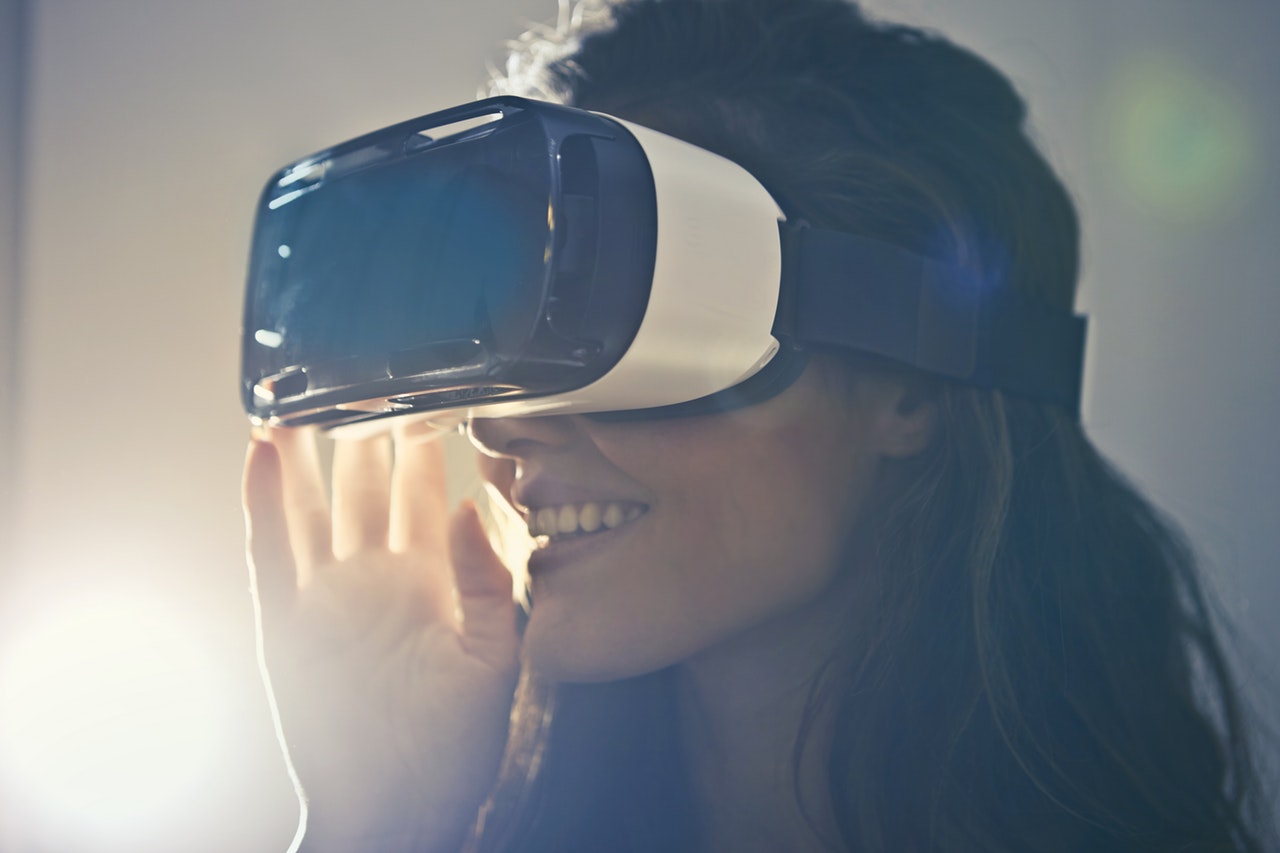This post is also available in Dutch.
With virtual reality you can experience the impossible. Where and wherever you like. How can this be interesting for science? VR-scientist Angelique Tinga explains!

With your own smartphone and some simple goggles, you can already experience VR!
Image: CC0, Pexels
Experience with impact
I first experienced virtual reality (VR) in 2014 during my first research job. Unaware of the impact the nexminutes would have on me, I put on some funny-looking glasses (Oculus Rift). A colleague started a simulation, and suddenly I was moving through a futuristic space. The effect of virtual movement was so strong I got a weird feeling in my gut and was barely able to maintain my balance. This experience was so special I was more than eager to investigate this.
Now, four years on, I use VR in my own experiments and often give demos. I am amazed still every time I see the impact of the technique and how strong the elicited emotions are. These intense effects are exactly the reason why VR is such an interesting technique.
Immersive computer-generated environments
In technical terms, VR is a computer-generated environment. There are different types of VR, but the most popular at the moment is the type where you are completely surrounded by a virtual environment. This type of VR is strongly immersive. It makes you feel like you are somewhere else; like the virtual aspect changed the world around you.
Research to understand VR
There are different reasons the technique is interesting for science. Firstly, the largest technology companies in the world (Facebook, Google, Microsoft) are investing billions in VR. Therefore, it wouldn’t be surprising if VR plays an important role in future daily life. But before we all wander around outside wearing crazy glasses, it would be nice if we understand what this technique does to us.
Research in every surrounding with exact precision
VR is also appealing for researchers because it enables you to investigate people in every possible environment. On top of a mountain in the bright sun, on the bottom of the ocean among the fish; VR can do it. Also, you can control with precision the events that happen. You can, for example, control when an explosion takes place. These are situations that are harder to construct in the real world and have a lower impact on a 2D screen.
Investigate the impossible
Another interesting possibility VR offers is that you can have people experience something that can otherwise be impossible. For example, you can give people extra body parts in VR and investigate its effects and how people cope with this (read more about it in this earlier blogpost). You can also make someone fly or give them some superpowers, or have someone be an animal or even a tree (click on the link to see fun movies). Our fantasy is the limit of the possibilities.
Get the most out of VR
Thanks to scientific research, first moves have been made to properly apply VR. An example could be how VR increases empathy by literally putting you in someone else’s shoes. VR can also support dealing with trauma because it offers new possibilities for exposure therapy (read more about this in an earlier blog). These are only a few of the many beautiful developments of a technique that is not studied much yet. Who knows what VR might bring us in the future!
Written by Angelique, edits by Annelies, translated by Rowena
